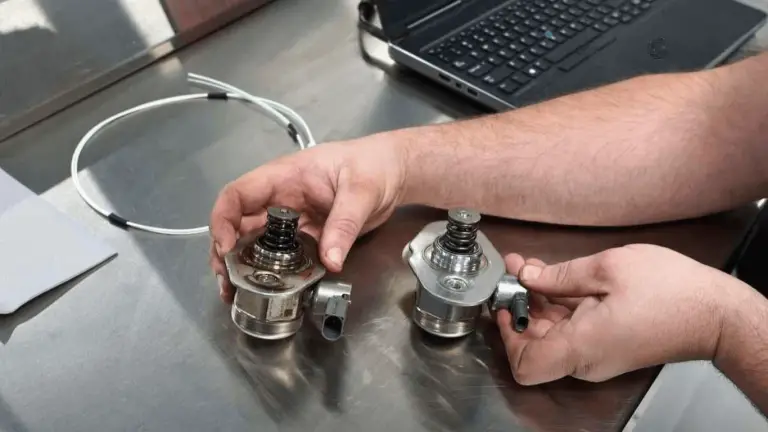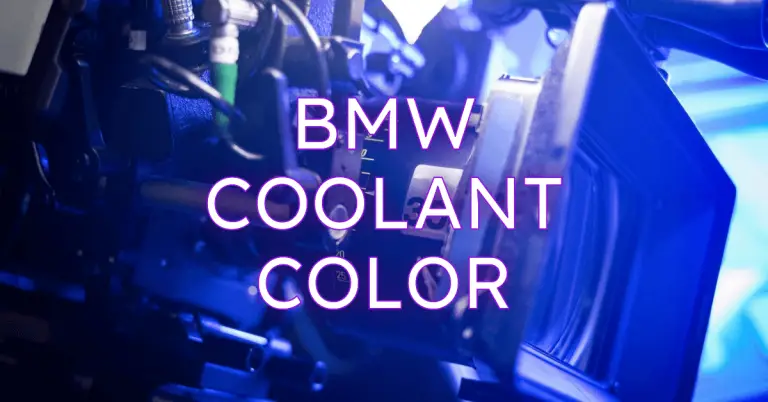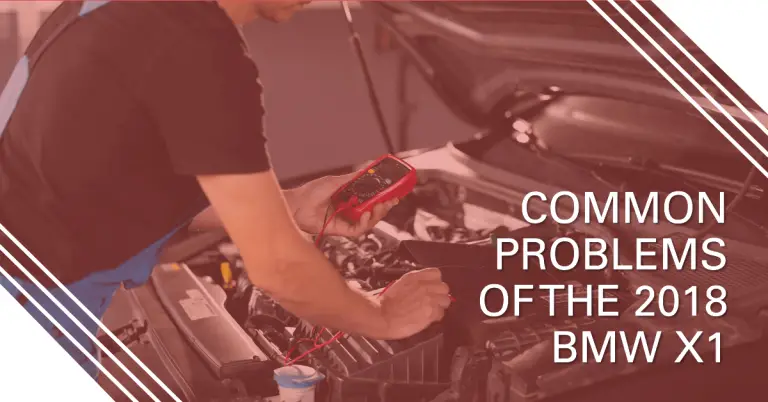DME BMW Meaning: Your BMW’s Digital Motor Electronics System
Finding that dreaded check engine light illuminated on your BMW’s dashboard is never a welcome sight. As you rack your brain trying to remember if you’ve noticed any strange sounds or performance issues from your prized bimmer lately, the questions start swirling. What could be wrong with my car? Is it safe to drive? And what in the world does this “DME” error code mean anyway?
Your BMW’s DME system, which stands for Digital Motor Electronics, is the master computer that controls vital aspects of the engine like fuel injection, ignition timing, emissions controls, and more. Read on for a full explainer on what BMW DME is, why these electronics replaced older mechanical systems, the key functions governed by this computer, how to diagnose DME problems, and how to help extend the life of this critical system in your BMW.
Back to the Basics: An Introduction to BMW DME Systems
Launched in 1977, the legendary BMW 7 Series was the first production car from the German automaker to feature digital engine electronics. This new technology revolutionized precision control and monitoring of engine functions, paving the way for major performance and efficiency gains in the decades that followed.
So what exactly is DME?
- DME stands for Digital Motor Electronics. It is the central computer that controls vital aspects of engine operation in late-model BMWs.
- The DME system replaced older mechanical control systems starting in the late 1970s and 1980s.
- This computerized “brain” monitors and precisely controls engine parameters for optimal performance.
On board the BMW 7 Series and other models, the DME took over key engine management functions:
- Monitoring engine speed, load, temperature, etc. with an array of sensors
- Adjusting the fuel mixture by managing fuel injector operation
- Controlling ignition timing for smooth combustion
- Operating other emissions control components
- Storing diagnostic trouble codes when issues arise
The DME brought about a massive leap in precision tuning, emissions control, engine efficiency, and reliability compared to relying on individual mechanical components alone. BMW recognized early on that digital electronics would revolutionize drivability.
Why Do BMWs Have a DME System?
BMWs made the switch from mechanical control systems to digital engine electronics for a few compelling reasons:
- Precision Monitoring and Control – The DME system can monitor parameters like engine speed, temperature, throttle position, and intake air volume with far greater accuracy using electronic sensors versus mechanical means. This enables more precise control of fuel and ignition timing for optimal performance.
- Increased Efficiency – By finely controlling the air/fuel mixture and ignition timing, the DME system can help the engine operate at peak efficiency levels. This improves fuel economy while maintaining smooth power delivery.
- Lower Emissions – Having precise control over fuel metering, ignition timing, and other parameters allows the DME to optimize the combustion process. Complete combustion results in lower emissions of hydrocarbons, carbon monoxide, and nitrogen oxides.
- Enhanced Reliability – Having a central DME computer to control key systems, rather than relying on individual components, improved reliability. The electronic control module is tucked away safely in the cabin rather than exposed to the elements.
- On-Board Diagnostics – The DME can monitor operation of sensors and engine systems for faults. When issues arise, it logs diagnostic trouble codes for quick assessment by a technician. No moreguessing which part might have failed!
The BMW DME system ushered in an era of unprecedented precision control under the hood. Drivers benefited from more power, increased fuel efficiency, cleaner emissions, and fewer breakdowns. It’s not hard to see why digital engine electronics are standard equipment today.
Major Functions Controlled by the BMW DME System
As the master electronic control unit for the engine, the DME handles a diverse array of critical functions:
Fuel Injection Management
One of the core DME functions is governing the engine’s fuel injection system:
- It monitors intake air volume and engine load using the mass air flow sensor and other components.
- Based on operating conditions, it actuates the fuel injectors to supply the precise amount of fuel needed for optimal combustion.
- The DME can adjust fuel delivery in small increments for fine-tuned control.
- For higher engine power demands, the DME richens the air/fuel mixture by increasing injector pulse width.
Ignition System Control
The ignition process is also closely governed by the DME computer:
- It uses operating data to determine the optimal ignition timing for smooth combustion with maximum efficiency.
- Signals are sent to the ignition coil packs to fire the spark plugs at just the right moment as the pistons reach top dead center on the compression stroke.
- Adjusting ignition timing is critical to prevent detonation while maintaining peak torque output.
Idle Speed Control
To maintain steady idle speed as accessories like the AC compressor cycle on and off, the DME adjusts idle air volume and ignition timing accordingly. Stable idle operation is controlled by the DME.
Emissions Control Management
The DME directly controls components related to reducing exhaust emissions:
- It operates the EGR valve to recirculate measured amounts of exhaust gas back into the intake manifold, reducing combustion temperatures for lower NOx output.
- The upstream oxygen sensors provide feedback to the DME about the air/fuel ratio. It then fine-tunes injector pulse width to maintain the optimal ratio for efficient catalytic converter operation.
- The DME monitors operation of the EVAP system to control fuel vapor emissions. Fault codes are set if vapor leaks are detected.
On-Board Diagnostics and Fault Memory
A vital DME function is continuously monitoring engine systems for proper operation. If faults arise, it logs diagnostic trouble codes which can be retrieved by a technician to identify issues:
- It cross-checks data from sensors to detect abnormalities or malfunctions. For example, a faulty mass air flow sensor that disagrees with other parameters.
- Past DME fault codes are stored for technician diagnosis even if currently inactive. Intermittent issues can be identified this way.
- The DME will operate in a default or “limp home” mode if major errors occur to prevent engine damage.
The DME provides a comprehensive array of engine management capabilities that were simply not possible using individual mechanical controls alone. Its digital processing power revolutionized precision tuning under the hood.
DME Generation Differences Explained
Over the decades, BMW’s DME systems have evolved through different generations:
Motronic DME (1st Generation)
- Debuted on BMW models in 1988, starting with the E30 3 Series.
- Known as Motronic version 1.1. Combined digital engine electronics with port fuel injection technology.
- Motronic controlled ignition timing, idle speed, and the fuel injection system.
- Oxygen sensor feedback allowed learning fuel maps for ideal air/fuel ratio control.
DME M3.x (2nd Generation)
- Introduced as part of BMW’s M70 V12 engine in the early 1990s.
- Used upgraded DME software known as M3.1 through M3.3.
- Added control of electronic throttle and enhanced knock control capabilities.
- Increased computing power and memory for more precise monitoring of engine functions.
DME M5.x (3rd Generation)
- Current generation DME adopted in the mid to late 1990s.
- Even more powerful processors for additional monitoring and precision control.
- Faster processing of sensor data for real-time ignition and fueling adjustments.
- CAN-Bus compatible for networking electronic control units.
As computing technology evolved, so did the capabilities found in BMW’s DME systems. Each generation built upon the last, adding improvements in efficiency, drivability, and engine longevity.
Signs of Potential BMW DME Problems
Because the DME computer governs so many aspects of engine operation, faults will often produce drivability issues or check engine lights. Here are some telltale signs of DME problems:
- The Check Engine Light Comes On – DME issues frequently trigger error codes that illuminate the check engine light. Don’t ignore this warning!
- Rough Engine Operation – Misfires, stalling, or rough idle can indicate DME trouble. If it can’t properly control ignition timing, combustion suffers.
- Poor Engine Response – Sluggish acceleration or lack of power may stem from inadequate fuel metering by a malfunctioning DME.
- Fuel Economy Changes – A noticeable drop in fuel mileage can happen if ignition timing or fuel mixture is no longer optimized.
- Emissions Test Failure – DME problems that increase emissions can cause failure of a smog check inspection when monitors show not ready status.
While exceptions exist, DME issues typically produce drivability, performance, or emissions-related symptoms. Don’t chalk such problems up to mere old age – have the DME diagnosed!
How to Diagnose BMW DME Issues?
When DME troubles are suspected, some smart diagnostic steps can reveal if this computer is indeed the culprit:
1. Retrieve Any Stored DME Trouble Codes
Connecting a compatible BMW scan tool and checking for diagnostic trouble codes is the first step in DME diagnosis. Specific codes point to components or sensors the DME detected faults with. No codes stored likely eliminates it as the root cause.
2. Assess If Symptoms Match DME Error Codes
Do code descriptions match the problems you’ve noticed with the car? For example, random misfires accompanied by cylinder-specific misfire codes. That’s a smoking gun pointing toward the DME. But a lack of related codes may rule it out.
3. Check DME Connectors and Harness
Ensure the wiring harness connecting various engine sensors to the DME computer is intact. Loose, damaged, or corroded pins and connectors can send bad data to the DME causing running issues.
4. Inspect DME Input Sensors
Faulty data to the DME from components like the mass air flow sensor, camshaft position sensor, crankshaft sensor, or oxygen sensors can certainly cause performance problems. Ensure they are operating properly before condemning the DME.
5. Consider DME Replacement
If you’ve verified supporting components are good, diagnostic codes point to internal DME failure, and symptoms match, replacement may be the fix. But first, try to reset adaptations with approved scan software if possible.
Accurate troubleshooting relies on methodically confirming each component in the DME control loop is sound. Don’t assume the main computer is bad without evidence. But if all signs point to it, DME replacement can get your BMW running right again.
Protecting your BMW’s DME System for Reliability
The DME is largely durable and designed for the long haul. But there are some tips for keeping it running properly:
- Use Genuine BMW LL-01 Approved Oil – This spec was introduced in 1996 to better protect DME systems. Subpar fluids can leave harmful deposits.
- Address Oil Leaks Quickly – The DME computer does not tolerate oil contamination. Seepage into electrical connectors causes failure. Fix leaks right away!
- Maintain Proper Battery Voltage – Too high or too low voltage can damage the DME. Check the battery, cables, and alternator if electrical gremlins arise.
- Avoid Erratic Ignition Timing Changes – Aggressively advancing or retarding timing stresses DME electronics. Use an approved tuner box for timing adjustments.
- Don’t Push Limits on Modified Engines – Heavily tuned engines tax the DME’s capabilities. Performance upgrades may require an ECU tune to compensate.
While designed for extreme durability, common sense care extends the service life of your BMW’s DME computer. Follow recommended maintenance and fix problems early to keep your car’s “electronic brain” in top form.
Summing Up BMW DME Essentials
The digital heart of your BMW’s engine, the DME computer enables a level of precision fuel and ignition control unachievable through mechanical means alone. This master electronic control unit monitors myriad sensor inputs to make split-second system adjustments for optimal drivability and efficiency.
Understanding the DME’s vital role equips you to make educated maintenance and repair decisions. Heed warning signs like check engine lights or rough running to prevent spiraling into major issues. With astute care, your car’s Digital Motor Electronics system will provide many more miles of optimized BMW performance.
Conclusion
The DME system is a cornerstone of your BMW’s engine management capabilities, but remains a mystery to many motorists. I hope this detailed look at what BMW DME is, its key functions, diagnosing problems, and maximizing its durability has lifted the veil on this critical component! Please leave a comment below if you have any other questions on your car’s Digital Motor Electronics system.







